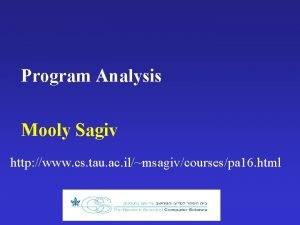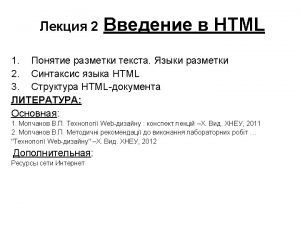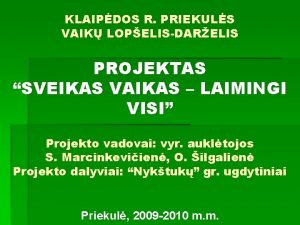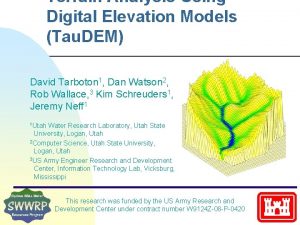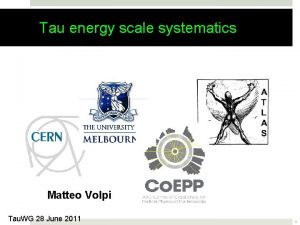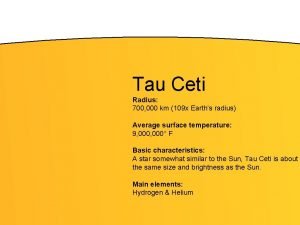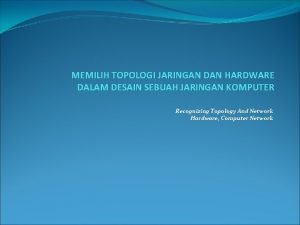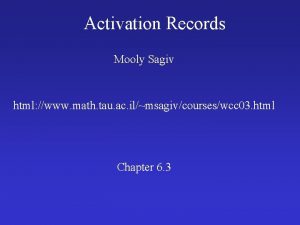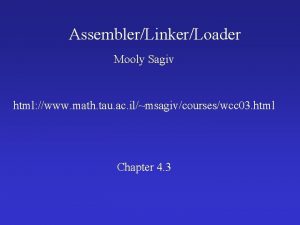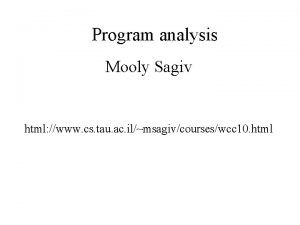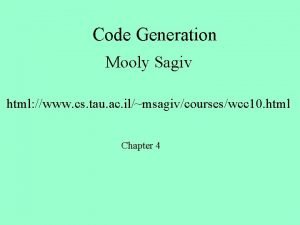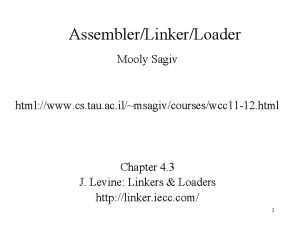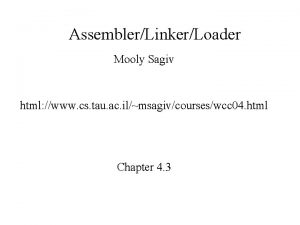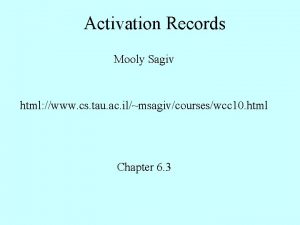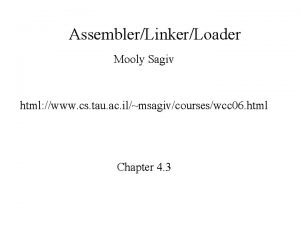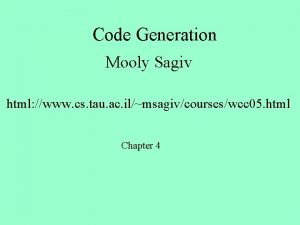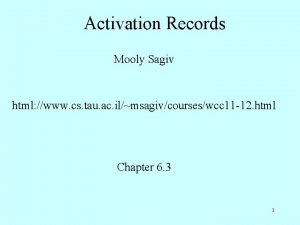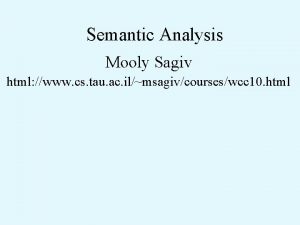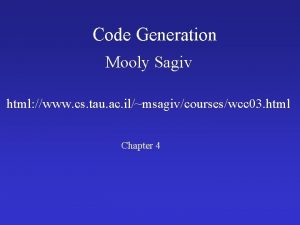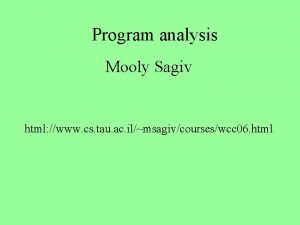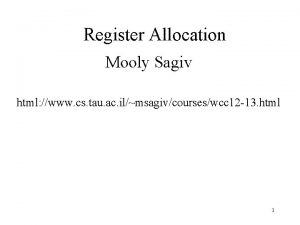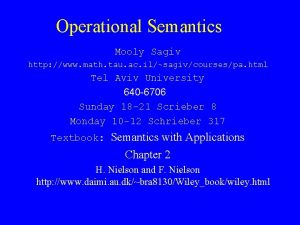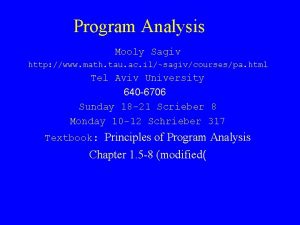Compiler Summary Mooly Sagiv html www math tau


















- Slides: 18

Compiler Summary Mooly Sagiv html: //www. math. tau. ac. il/~msagiv/courses/wcc 03. html

Lecture Format • Compilation stages and techniques – Review • Break • Last year’s exam

Compiler Structure Input program Syntax errors Lexical Assembled code Tokens Parser AST analysis Assembler Library “Semantic” errors Assembly input Binary code Linker Executable code output Context Analysis Code Annotated Generation AST

Lexical Analysis • Input: Text (input-file) • Output: Tokens (with values) regular expressions Jlex input program scanner tokens

Techniques • Convert regular expressions to finite automata • Accepting states are associated with actions – Actions which are defined first take priority • Scanner uses backtracking to find longest match

Syntax Analysis (Parsing) • Input: Stream of tokens • Output: Abstract Syntax Tree Context free grammar Jcup tokens parser AST

Recursive Descent (Top Down Parsing) • Procedure for every non-terminal • The procedure of every non-terminal identifies leftmost derivations – Consider a single token – Decide which production to apply • Works for a limited class of grammars • [The parser tables can be constructed algorithmically]

Bottom-Up Parsing • Construct the tree from the leaves • Store “states” on the stack • Identifies rightmost derivations in reverse order • Works for a limited class of grammars • The parser tables can be constructed algorithmically (SLR(0)

Context Analysis • Input: Abstract Syntax Tree • Output: Annotated Abstract Syntax Trees – Semantic errors • Several tree traversals • [Can be declaratively defined using attribute grammar] • Examples: – Name resolution – type checking – Consistency of usages • Private fields, … – “Allocate” stack slots (offsets) for variables

Code Generation • Input: AST • Output Assembly

Code generation of procedures • Generate prologue assembly code for opening a stack frame – Local (automatic) variables – callee-save registers • Generate code for procedure body • Generate epilog assembly code for closing the stack frame – Restore callee-save register • Returns to the caller

Code generation for procedure body • Code for control flow statements – Normal – Runtime checks – Exceptions • Code for side-effect free expressions – 2 -phase Weighted tree (optimal) • Code for basic blocks – – – • Avoids store/loads Construct dependency graphs Optimize dependency graphs Generate code with symbolic registers Allocate architectural registers to symbolic Code for procedure invocation – Store caller-save registers – Transfer actual parameters – Actual call

Heap allocated data • “Long” lived • Duration can exceed procedure body • Relies on Garbage collection – Library with the help of the compiler • Garbage collection techniques – Stop the world vs. incremental – Generational • Garbage collecting algorithms – Mark and sweep – Copying – Reference counts

Runtime descriptors • Additional information on the stack/heap – Type information – Dynamic class binding – Dispatch tables – Array size • Generate code to fill information

Assembler • Convert assembly to binary • Resolve labels – Two phase – Backpatch • Simple overloading • Produce relocation information

Linker • Relocate code • Address changes

Loader • Part of the operating system • Initializes runtime state

Tiger vs. TC • Records • Procedure nesting • Object oriented – Classes – Virtual functions
 Mooly sagiv
Mooly sagiv Higgs to tau tau
Higgs to tau tau Yet another compiler compiler
Yet another compiler compiler Cross compiler in compiler design
Cross compiler in compiler design Canvas доска
Canvas доска Slidetodoc.com
Slidetodoc.com Slidetodoc.com
Slidetodoc.com Bhtml?title=
Bhtml?title= 12.html?title=
12.html?title= Whakataka te hau lyrics
Whakataka te hau lyrics Karakia whakamutunga kia tau
Karakia whakamutunga kia tau Elastisk tau biltema
Elastisk tau biltema Labas rytas tau galvyte
Labas rytas tau galvyte Un templu sfant versuri
Un templu sfant versuri Tau 7 for sale
Tau 7 for sale Tau dem
Tau dem Tau energi
Tau energi Tau ceti distance to earth
Tau ceti distance to earth Desain topologi jaringan
Desain topologi jaringan
